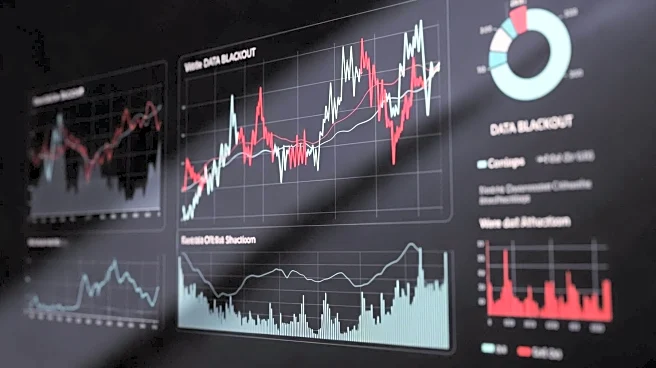What's Happening?
A recent study by VantageScore has highlighted a significant increase in auto loan delinquency rates, which have risen by more than 50% over the past 15 years. This trend persists despite declines in delinquency rates for
other loan categories such as credit card loans, personal loans, and home equity loans. The study indicates that auto loans have become the riskiest credit product, excluding student loans. The Federal Reserve's data shows that auto loan delinquency rates reached 3.8% in June 2024, marking the highest level since June 2010. The increase in delinquency rates spans all household income groups, with prime borrowers experiencing faster climbs than subprime borrowers. The study also notes a 57% increase in average loan amounts over the last 15 years, surpassing growth in other loan categories.
Why It's Important?
The rise in auto loan delinquencies is significant as it reflects broader economic pressures affecting consumers across various income levels. The increase in monthly payments, driven by rising car prices and interest rates, has made it challenging for many Americans to keep up with their auto loan obligations. This situation is exacerbated by the fact that one in five new car loans now have monthly payments exceeding $1,000. The high cost of vehicles, coupled with elevated borrowing costs, has led to longer loan terms, increasing the risk of borrowers becoming underwater as their cars depreciate faster than they pay down the loan. Additionally, inflation and an unsteady employment picture contribute to the financial strain on consumers, highlighting the need for economic stability and policy interventions to address these challenges.
What's Next?
As auto loan delinquencies continue to rise, stakeholders such as financial institutions, policymakers, and consumer advocacy groups may need to explore solutions to mitigate the impact on consumers. Potential measures could include offering more flexible loan terms, reducing interest rates, or implementing policies to stabilize car prices. Monitoring economic indicators such as inflation and employment rates will be crucial in understanding the trajectory of auto loan delinquencies. Additionally, financial education initiatives could help consumers better manage their finances and make informed borrowing decisions.
Beyond the Headlines
The increase in auto loan delinquencies may have long-term implications for the automotive industry and financial markets. As consumers struggle with high payments, there could be a shift in purchasing behavior, potentially affecting car sales and production. Financial institutions may need to reassess their lending practices and risk management strategies to adapt to changing consumer credit profiles. Furthermore, the situation underscores the importance of addressing systemic economic issues such as income inequality and access to affordable credit, which could have broader societal impacts.












